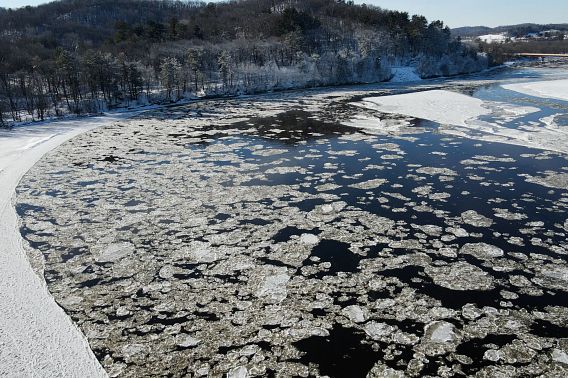

Temperature swings, mixed precipitation and other factors are making ice unsafe to walk or drive on across much of the state, despite recent snowfall and subzero temperatures. Photo credit: Wisconsin DNR
MADISON, Wis. – The Wisconsin Department of Natural Resources (DNR) urges the public to practice ice safety on all of Wisconsin’s waterbodies and remember that no ice is safe ice.
Temperature swings, mixed precipitation and other factors are making ice unsafe to walk or drive on across much of the state, despite recent snowfall and subzero temperatures.
Get Ice Status From Local Sources
The DNR does not monitor ice conditions. If your plans include access to or use of an ice-covered waterbody, contact your local fishing clubs, bait shops or outfitters for ice conditions.
These places routinely check ice conditions and can give you the best and most current conditions. If you can plan your outing without any travel over ice, do it.
Conditions Vary On Waterbodies
Each waterbody can have its own characteristics. Check if the lake has inlets, outlets, narrows that have currents or is spring-fed, all of which can thin the ice. Some smaller lakes can have aerators that are run throughout the winter, either covering a large area towards the center of the lake or may have smaller aerators placed by private property landowners adjacent to their shore and piers.
It is equally as important to stay alert for pressure ridges or ice heaves. These can be dangerous due to thin ice and resulting open water. They are often created, move or grow with changes in temperatures and high winds. Pressure ridges and ice heaves can happen on Wisconsin’s largest inland lake, Lake Winnebago, a popular home to sturgeon spearers, and the Bay of Green Bay, among other places.
Ice Safety Basics
Here are a few basic ice safety tips to remember:
Have a plan in place noting where you will be and when you plan to return. Along with leaving a written note of your plans, keeping a charged cell phone is also recommended.
Check out the DNR’s Ice Safety webpage for more information on staying safe on the ice, including tips for creating ice claws and what to do if you fall through ice.